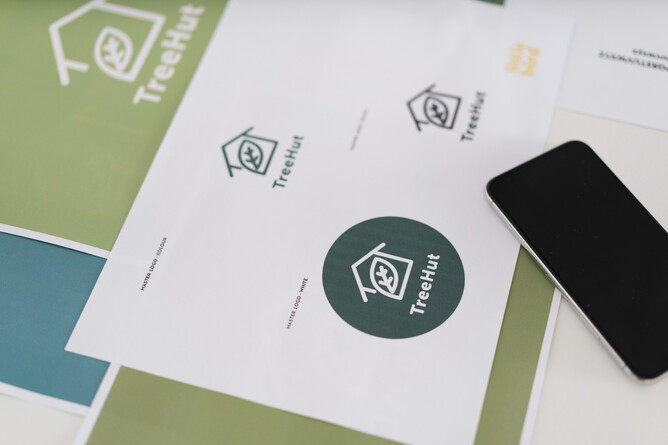As a graphic designer, I know the importance of brand guidelines. They are a set of rules and standards that define how a brand should be represented visually. This includes things like the brand's logo, colour palette, typography, and imagery style.
Brand guidelines ensure that a brand is presented consistently across all platforms. This includes everything from the company's website and social media pages to its marketing materials and product packaging. When customers see the same branding elements used everywhere, it helps to create a sense of familiarity and trust.
What should be included in brand guidelines?
The specific contents of your brand guidelines will vary depending on your industry and the unique needs of your business. However, most brand guidelines will include the following elements:
Logo - the logo is one of the most important elements of a brand identity. Brand guidelines should include outlines of how your logo should be used in different contexts, such as on your website, in print materials, and on social media. The guidelines should also specify the minimum size and spacing requirements for your logo.
Colour Palette - a brand's colour palette is another important element of its visual identity. Brand guidelines should provide specific colours and codes (like HEX, RGB, and CMYK) that represent your brand. This will help you to create a cohesive and recognisable visual identity for your brand.
Typography - the fonts that are used in a brand's branding materials can also have a big impact on its overall look and feel. Brand Guidelines should specify the fonts to use for headings, body text, and other elements of your branding. This will help to create a consistent and professional look for your brand communications.
Imagery - the type of imagery that is used in a brand's branding materials can also help to create a certain mood or feeling. Brand Guidelines might offer guidance on the types of images or illustrations that align with your brand's values and aesthetics to help maintain a cohesive visual identity.
In addition to these visual elements, brand guidelines may include information about the brand's tone of voice, messaging style, and overall personality. This information can help to ensure that all of the brand's communications are consistent and on-brand.
As a graphic designer, I find that brand guidelines are essential for creating effective and consistent branding materials. By following the guidelines, I can help to ensure that my work is always on-brand and that it accurately reflects the brand's identity. Here are some tips for creating effective brand guidelines:
Keep it simple. Don't overload your brand guidelines with too much information. Focus on the most important elements of your brand identity, such as the logo, colour palette, typography, and imagery style.
Be clear and concise. Make sure that your brand guidelines are easy to understand and follow. Use clear and concise language, and provide plenty of examples.
Make it accessible. Make sure that your brand guidelines are accessible to everyone who needs them. This may involve creating a digital version of the guidelines that can be easily shared and updated.
Keep them up-to-date. Your brand guidelines should be a living document that is updated as your brand evolves. Make sure to review them regularly and make any necessary changes.
All branding design projects by Little Bird include brand guidelines. Brand guidelines are an essential tool for any business that wants to create a strong and cohesive brand identity.
If you need guidelines created for your brand or you want to update your brand, send me an email laura@littlebirdcreative.nz.


